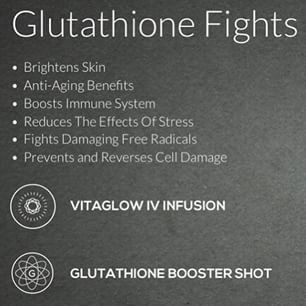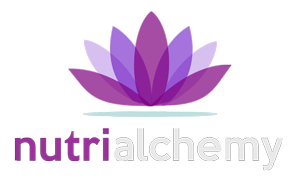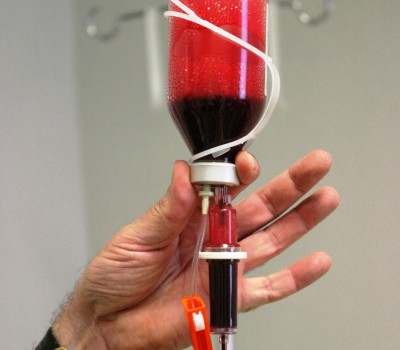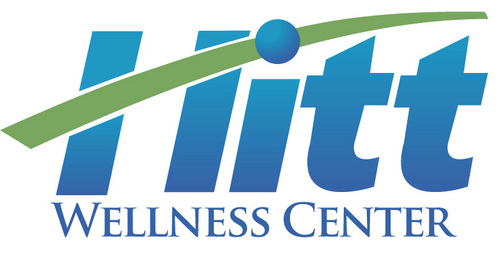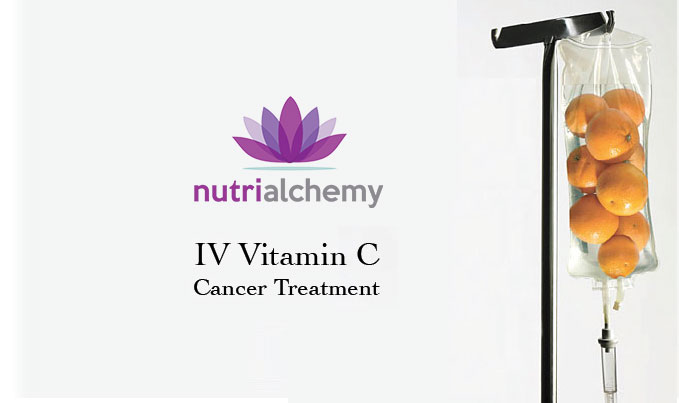Summary
The first step in addiction recovery at MindBody Medicine Center is a functional medical assessment looking for conditions in the body that contribute to fatigue, anxiety, depression, reduced pain tolerance, poor focus and more. These common underlying conditions include food sensitivities, gluten intolerance, adrenal and thyroid imbalances, malabsorption, neurotransmitter deficiency and NAD deficiency. While these issues are treated, mostly with nutritional supplements and diet, the patient receives intravenous NAD and amino acids based in individually designed protocols for a 10 day period of time, supervised by our medical staff. The IV NAD and amino acids improves brain function based on higher levels of cellular energy production along with increased neurotransmitters, such as serotonin. There is some withdrawal symptoms for two or three days, but reduced by 70 to 80% when compared to “cold turkey” withdrawal. After three to five days as withdrawal symptoms disappear, craving subsides and clarity of thinking is restored.
This treatment is not a substitute for recovery. It is the beginning of the process of healing. Once the brain and body are functioning better, the patient has the energy, clarity and focus to engage in the recovery process. He or she will understand the reasons for compulsive behavior and with better health and motivation, they can stop compulsive behaviors and make mindful choices that are self-supportive rather than self-destructive.
Studies done in the early 1960s demonstrated the efficacy and safety of IV NAD in detoxifying patients from alcohol, opiates, tranquilizers and stimulants. Like the early studies, our experience with the protocol over the past five years substantiates its benefits in greatly reducing withdrawal symptoms, as well as reducing, and often eliminating the cravings.
The MindBody Medicine Center program provides individual, family and group therapy. Patients are provided with continued integrative care for their underlying medical problems, which helps them to feel better physically and mentally. Therefore they are more likely to continue healing psychologically, emotionally, socially and spiritually. A two year commitment to after care treatment is critical. The underlying psychological issues which often lead to substance abuse must be resolved for long lasting recovery.
Background
Addiction is a disease in the body and the mind and successful therapy depends on treating both. MindBody medicine is based on the unity of mind and body and focuses on promoting health and balance in the mindbody, thereby providing highly effective therapy for addiction. If you detoxify, or withdraw, from alcohol or a drug, but do not address the conditions in the body that create fatigue, depression, and anxiety, then relapse is more likely and therapy has been incomplete. Similarly, if you withdraw from a substance and do not understand the psychological and spiritual issues that promoted the need for it, then relapse is likely and the “lessons of disease” have not been learned.
The body
Integrative, or, functional medicine provides the tools to assess and treat the conditions in the body that contribute to fatigue, depression, and anxiety, thereby increasing the likelihood of chemical dependency. These include:
- Nicotinamide adenine dinucleotide (NAD) deficiency
- Neurotransmitter deficiency (serotonin, GABA, adrenaline, noradrenaline, dopamine, etc)
- Metabolic cofactor deficiency
- Pyroluria
- Hypothyroidism
- Adrenal fatigue
- Intestinal yeast overgrowth
- Delayed onset food sensitivities
- Gluten intolerance
- And more
These “terrain issues” in the body need to be properly treated in order to make detoxification easier and to prevent relapse.
The mind and spirit
However, addiction is also disease in the mind. As the great psychoanalyst Dr. Franz Alexander, wrote: “The fact that the mind rules the body is, in spite of its neglect by biology and medicine, the most fundamental fact which we know about the process of life…”
The origins of most physical disease are within consciousness – the body is the messenger of the conflicts, sustained fears, suppressed emotional traumas, disturbed patterns of thinking, and other imbalances that lie within the conscious and unconscious mind. Many people have painful childhood experiences, including patterns of neglect, smothering control, abandonment, and emotional, physical and sexual abuse. Later on there can be failed relationships, years of marital conflict, and the pain of loneliness. Many experience decades of unfulfilling employment, foiled personal creativity and the quiet desperation of a slowly dying spirit. These life experiences contribute to relentless anxiety, depression, denied emotions, destructive beliefs, hopelessness, helplessness, “giving up”, and an endless variety of recurrent stresses.
Dis-ease of any kind is the body’s way of getting your attention and inviting this self-exploration, thereby offering true healing.
Brain dis-ease – Reward Deficiency Syndrome
Neurotransmitters are chemicals in the brain that help to control states of consciousness, including moods. Serotonin and GABA down-regulate electrical activity in the brain, thereby contributing to calm, peacefulness, or less anxiety. Adrenaline and nor-adrenaline up-regulate electrical activity thereby promoting excitement, motivation, or, reducing depression and apathy. Dopamine is the “feel good” brain chemical. It is the dance of these electro-chemicals that produce emotional balance and feelings of well-being.

When the proper flow, or cascade, of these neurochemicals is impaired, or, the brain’s receptors are blocked, then a variety of problems can develop, including:
- Mood instability
- Irritability
- agitation
- hypersensitivity
- Anxiety
- Depression
- Apathy
- Impaired concentration
- Trouble focusing
- Despair
A host of medical and lifestyle issues can disturb the healthy flow of neurotransmitters, including chronic stress, alcohol, drug abuse, genetics, poor diet, digestive disturbances and malabsorption, micronutrient deficiency and more. The result can be Reward Deficiency Syndrome (RDS), a term primarily used for hereditary chemical imbalances wherein the pleasure centers, which regulate feelings of well being in the brain, fail to receive appropriate neural signals. As a result, the brain sends out urgent messages of craving. In the brains of addicts, various neurotransmissions are affected, depending upon the drug or drugs that have been used. As a result addicts experience difficulty concentrating and have mood swings, for example, as well as having other physical symptoms. Collectively, these symptoms are called cravings and withdrawals. Craving and withdrawal symptoms are a result of a neurochemical imbalance in the brain.
It is the Reward Deficiency Syndrome that causes the compulsive use of alcohol and drugs that help to feel good, at least temporarily. In addition to alcohol, people use nicotine, other stimulants, illicit drugs, junk foods, sugars, or thrill-seeking behaviors such as gambling, sex and Internet porn. Unfortunately, this only provides temporary relief while bringing with it the possibility of more long-term problems.
Nicotinamide adenine dinucleotide (NAD) deficiency – a key issue
NAD stands for nicotinamide adenine dinucleotide, which is the chemical term for a molecule that reacts with oxygen in the mitochondria in every cell of your body in order to create energy so you can move, breathe, pump blood, digest food, think, and generally, live your life. Lack of this essential cellular fuel is now recognized as a key feature of chronic fatigue, apathy, depression, anxiety, alcohol and drug addiction, weak immune system (infections and cancer), muscle pain and weakness, headaches, memory disturbance, sleep problems, focus and concentration defects and other chronic diseases. NAD deficiency may be an unrecognized epidemic of cellular disease.
Let us take a look at some of the functions of NAD in the body:
- Increases energy in brain cells
- Stimulates production of dopamine, serotonin, and noradrenaline, thereby improving moods
- Increases energy in heart cells
- Protects and repairs DNA, reducing DNA mutations which contribute to atherosclerosis, cancer, immunodeficiency, rheumatoid arthritis, and much more
- The “most powerful antioxidant” in the body according to Dr. Richard Passwater in his bookNADH-The Energizing Coenzyme
- Lowers cholesterol
- Lowers blood pressure
- Strengthens the immune system
- Stimulates nitric oxide production, thereby improving blood flow in the body
Medical research has shown the following medical conditions to improve with NAD therapy:
- Chronic fatigue
- Depression
- Anxiety
- Alcohol and drug addiction
- Sleep disturbance
- Memory loss (forgetfulness)
- Attention deficit
- Diabetes
- Muscle pain and weakness
- Joint pain and stiffness
- Headaches
- Fevers, sore throats and swollen lymph glands
- Parkinson’s disease
- Cancer
Research has also shown that NAD can provide the following benefits in “healthy” people:
- Increased physical energy
- Improved mental performance
- Improved response to short term sleep deprivation
- Reduce the effects of jet lag
- Enhance libido
- Anti-aging
Since NAD is so fundamental to good health, how is it that we can become deficient in this powerful molecule? First of all, the vitamins, minerals, complex carbohydrates, proteins and fats come from our diet and provide the building blocks to citric acid cycle energy production. If any one of the nutritional factors is low, energy production is weakened. Since oxygen is just as important as hydrogen in cellular energetics, lack of exercise and shallow breathing due to stress are common factors that can reduce the amount of oxygen at the cell level. And finally the enzymes that catalyze the citric acid cycle are often inhibited or destroyed by chemical or physical toxins that create oxidative, or free radical, damage. Free radical damage comes from cigarette smoke, drugs, radio waves from cell phones and wi-fi, and the myriad chemicals found in all humans at this time on earth, including phalates, parabens, pesticides, styrene, benzene, toluene, and thousands more. For example, medical scientists now widely believe that Alzheimer’s dementia and Parkinson’s disease share the common feature of nerve cell degeneration due to impairment of the ATP producing enzymes with the citric acid cycle and mitochondria.
Genetic NAD deficiency may be present at birth and appear in children as poor sleeping, behavioral problems, hyperactivity, impaired concentration, academic stress and underachievement. Some people have been tired and depressed for as long as they can remember. For these people there is a greater tendency to try drugs and alcohol in order to improve energy and mood, and simply feel better, but the risk for addiction is high.
Genetics and addiction
A word of caution is necessary as we discuss genetics and addiction, or, any other disease. Inherited variations in genes do not invariably lead to disease. Lifestyle and mind style factors often override, so to speak, a genetic tendency. Basically the DNA is the hardware in the computer and the epigenome is the software, which is influenced by our lifestyle and the choices we make in our lives. The epigenome responds to our thoughts, emotions, beliefs and overall stress levels, as well as our diet, exercise levels and other features of our daily lives. Basically, the genes put the bullet in the gun, but it is our lifestyle and mind style that pulls the trigger.
NAD deficiency:
There may be a genetic polymorphism that reduces a gene coding for a mitochondrial protein which regulates NAD production. Since mitochondrial DNA is all received from the mother through the egg (no mitochondria are found in sperm) we can look to the maternal side for clues to energy production in the family history.
Dopamine D2 receptor impairment:
Since the primary neurotransmitter of the reward pathway is dopamine, genes for dopamine synthesis, degradation, receptors, and transporters are areas of research. Also, serotonin, norepinephrine, GABA, opioid, and cannabinoid neurons all modify dopamine metabolism and dopamine neurons. Therefore, defects in various combinations of the genes for these neurotransmitters may result in a Reward Deficiency Syndrome (RDS).
Catechol-O-methyltransferase (COMT) deficiency:
COMT is one of several enzymes that degrade catecholamines, such as dopamine, epinephrine, and norepinephrine. Deficiencies in this enzyme increase the probability of anxiety, panic and other mood disorders.
Questions and Answers
How does the brain work?
The brain is composed of billions of nerve cells, called neurons. Brain activity is the interaction of neurons as they communicate with one another. Neurons do not actually touch one another; instead, they are separated by a small gap called a synapse. Activity within a neuron is electrical; however electrical activity cannot cross the synapse. When one neuron wants to signal another, it releases a number of neurotransmitter chemical molecules into the synapse. For each type of neurotransmitter, the receiving neuron has specific receptor sites on the surface. As neurotransmitter molecules bind to a receptor site, the process causes electrical activity in the receptor neuron. The receiving neuron then releases the neurotransmitter molecules so that the sending neuron can absorb them from the synapse in a process called re-uptake, stopping the communication.
How do we feel pleasure?
The presence of dopamine, a neurotransmitter, in the synapses of the reward center of the brain is directly related to every feeling of pleasure we experience, from eating good food to falling in love. Other neurotransmitters mediate other emotions and attitudes.
How do people become addicted?
As people continue to use addictive substances, receptor function decreases, which requires the increased use of substances for pleasure or just a sense of well being. In the absence of external substances, the body experiences a neurotransmission deficit. Some people begin by taking drugs to feel high while others begin by innocently increasing their prescription use to achieve the original effect. There are as many reasons to become addicted as there are people who become addicted. In most cases, NO ONE begins by believing they will become a slave to an external power which completely consumes and controls their life.
What is withdrawal?
When a chemically dependent person is denied access to a substance to which s/he is addicted, the addicted brain goes into a frenzy that manifests itself in the physical symptoms of withdrawal. The symptoms may be life threatening and may induce agitation, hallucinations, intestinal upsets, severe muscular aches, etc. After withdrawal, the body may be completely free of the addicting substance, yet neurotransmitters of the brain are still not in balance. This may lead to physical feelings of craving, an almost overwhelming desire to use the substance again.
What is your NTR program using NAD?
The physical and mental condition resulting from chemical dependence means that the brain is just not working correctly because neurotransmission is thrown out of balance. Rebalancing the brain requires detoxification and cell function stabilization. Our protocol administers a NAD along with combinations of amino acids, vitamins and minerals taken orally. This process renders the patient nearly or completely free of cravings.
The Addiction Recovery Program is a ten day outpatient process based upon the patient’s history and their needs. It is given intravenously to assist the patient through a comfortable withdrawal reducing or eliminating physical cravings. Specially trained nurses under the supervision of a licensed physician, administer each treatment.
What is the treatment process?
The first step is a comprehensive functional medical evaluation which reviews all systems in the body, including digestion, nutrient absorption, hormone balance, immunity and the like. After that dietary recommendations are provided, along with nutritional supplements. Then the 10 day intravenous program is started. The IV infusion varies from day to day and is individualized for each patient. Each day of the treatment, a nurse inserts an IV line. The patient relaxes in a lounge chair while the intravenous formulation is slowly infused through the vein. The uncomfortable feelings of withdrawal and cravings subside and remain at bay surprisingly quickly. Between the fourth and eighth day patients typically report feelings of amazing mental clarity. Infusions are tolerated well and any mild side effects disappear at the cessation of infusion. The severe physical symptoms of withdrawal vanish; however, the full protocol is required to complete the treatment and minimize or eliminate physical cravings. Note that following treatment the psychological aspects of addiction still need to be addressed. During the day the patient may watch television, read, eat, and even doze. At the end of the day, the IV is disconnected and the patient leaves the outpatient clinic.
What about multiple addictions?
Based on the comprehensive medical evaluation, our Addiction Recovery Program can simultaneously treat addictions to many combinations of prescribed or illicit substances, including drugs, alcohol and nicotine.
Is your program a cure for addiction?
The disease of addiction is a chronic illness just like diabetes. There is no cure to date. Our program is a safe, effective management tool.
Can the patient ever resume use?
No. If the patient uses any mood altering substances after treatment is complete, the brain’s chemical balance will be altered and physical cravings will likely return. If, however, a patient does relapse, a simple one or two day booster will be sufficient for restoration provided the patient returns for a booster as soon as possible after using or if cravings return.
After treatment, is normal life possible?
After treatment the patient is no longer physically addicted and may certainly resume a normal life; however, an addicted person will typically not have been leading a normal life for some time. In order to rejoin the world successfully, a variety of aftercare coping strategies can be helpful. We will be happy to refer to any of the following:
- AA, NA, and/or other 12-step program
- Individual psychotherapy
- Group psychotherapy
- Family psychotherapy
- Exercise programs
- Affinity and other social groups
- Residential and/or Intensive Outpatient Programs
Is the treatment safe?
Yes. It is completely safe. Licensed nurses work under the supervision of a licensed physician who approves a customized treatment plan and reviews progress. The intravenous solutions are made by a U.S. licensed compounding pharmacy.
Who can become addicted?
Anyone can become addicted if s/he overuses powerful, mood-altering substances; however, there is a growing body of evidence to indicate that certain people are at greater risk for becoming addicted. Statistically speaking, a spectrum of problems (alcohol, drug, tobacco addiction, etc.) tend to occur together, rather than being independent variables. There may be a genetic basis for a propensity to become addicted.
What other services are available during the 10 day program?
- Hypnotherapy
- Acupuncture
- Emotional healing therapies
- Cognitive therapy
- Integrative massage therapy
- Pulsed electromagnetic field therapy
- Nutritional counseling
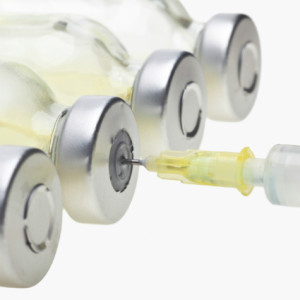
 Vitamin B-12 is one of the most important vitamins that our bodies need to function at our peaks and is a main source of internal energy. Is everyone vitamin B-12 deficient? No. Is everyone getting enough vitamin B-12 from their foods? Probably not. Booster shots have proven to be efficient way to get enough vitamin B-12 into our systems.
Vitamin B-12 is one of the most important vitamins that our bodies need to function at our peaks and is a main source of internal energy. Is everyone vitamin B-12 deficient? No. Is everyone getting enough vitamin B-12 from their foods? Probably not. Booster shots have proven to be efficient way to get enough vitamin B-12 into our systems.